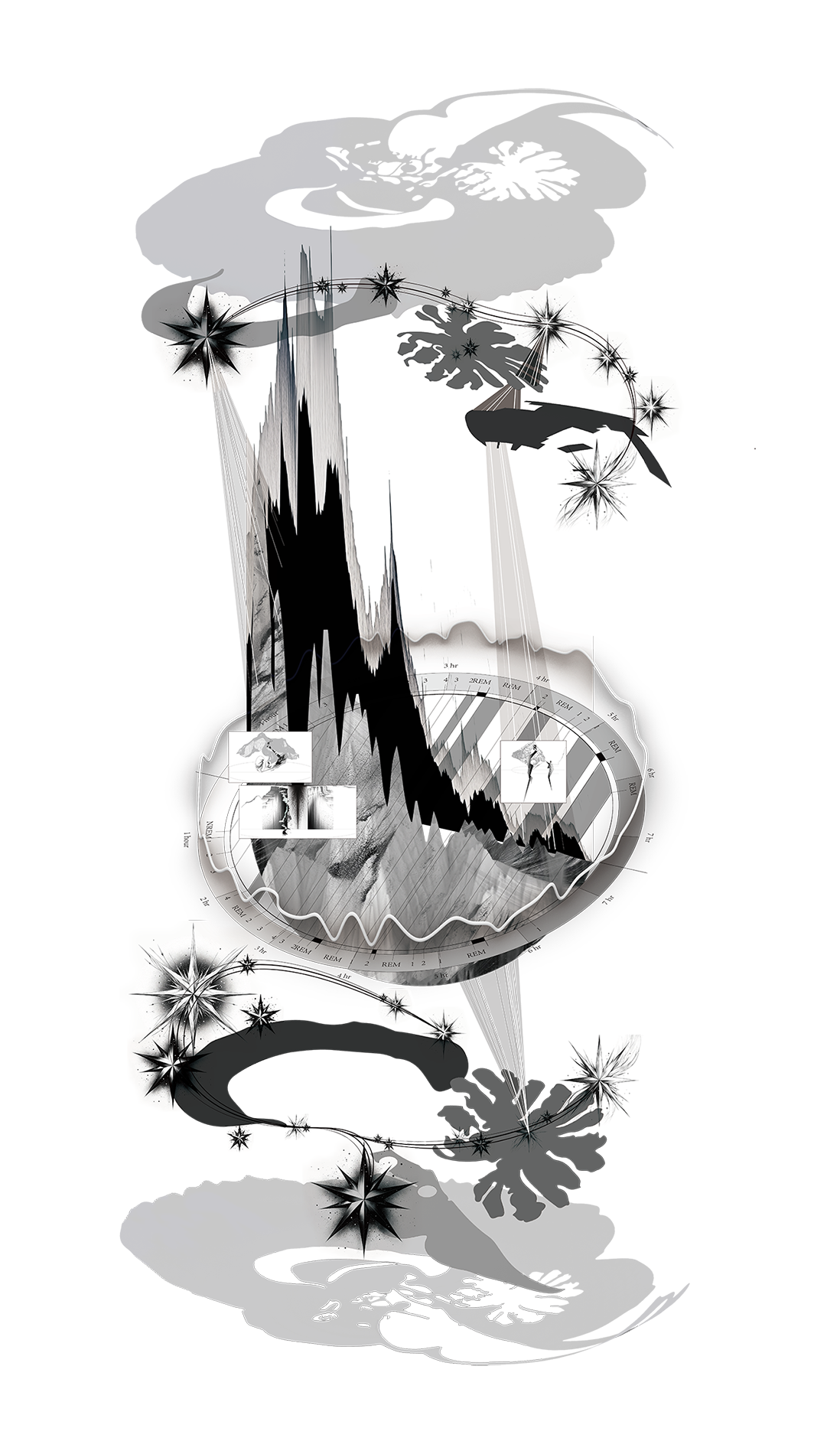In my graduation thesis design, I aim to visually represent the concept of sleep as an otherworldly dimension, distinct from the tangible reality we can touch, through the medium of 3D objects, and into a set design for thesis show.
Within my design, the discipline of sleep science is envisaged as a vast universe. Here, sleep itself is depicted as physical terrain, the brain, which generates and influences sleep, is envisioned as a nebula enveloping the terrain, the neurons flowing through the brain as glowing stars, and the images produced by the stars’ light passing through the nebula onto the terrain represent dreams.
Firstly, regarding the terrain, the sleep cycle from onset to awakening is represented by a descent curve indicating the ease of awakening, mirroring the terrain’s elevation. Areas where awakening is more challenging are depicted with higher elevations due to a more pronounced curve, while easier awakening corresponds to lower elevations, with the terrain dipping below the baseline upon awakening. The terrain beneath this baseline represents the waking world.
Simultaneously, a complete sleep cycle is divided into different stages, each characterized by distinct sleep features. For instance, during Stage 1, one is easily awakened by noise. These stages recur, providing scientific benchmarks for the phases of sleep reached, and in the context of my sleep terrain, translate into longitudinal zones with distinct geological features—like Stage 1’s rugged terrain dipping to or even below the baseline.
Secondly, the brain nebula, as previously mentioned, controls sleep, including both the onset and awakening. Thus, in my design, the brain is divided above and below the baseline, with the upper part controlling sleep onset and the lower part awakening. Within the brain, neurons carrying hormones and information traverse specific paths to different brain regions, influencing sleep. For example, in the sleep-inducing Process S, neurons originate from the Pons, sending nerve cells to the lower brainstem and spinal cord to interpret bodily signals, and to the forebrain for emotional and cognitive processing, thereby initiating a series of reactions such as progressing through different sleep stages or inducing muscle atonia. In my design, different brain regions are depicted as layers of a nebula, with neurons represented as stars moving along orbits.
Thirdly, regarding the representation of dreams through light and shadow, as stated before, different parts of the brain analyze physical and cognitive activities during the day to form dream content. In my design, this content is sculpted into shapes and clusters within these brain regions. Thus, as the neuron stars pass through these fixed regions, their light projects onto the terrain, creating shadows that depict dreams.
Furthermore, the way the brain analyzes physical and cognitive activities during the day and how it affects sleep, such as the lower brainstem and spinal cord interpreting bodily signals and the forebrain processing emotions and cognition, is represented in my exhibition design through interactive objects. These objects
transform audience input into visual representations on the terrain.
Thus, in my thesis design, I employ the concept of the universe to concretely present the abstract nature of sleep. Of course, besides the brain, other factors control and influence sleep, but within the scope of my research, these remain unexplored territories, corresponding to the unknown parts of the universe in my design.
